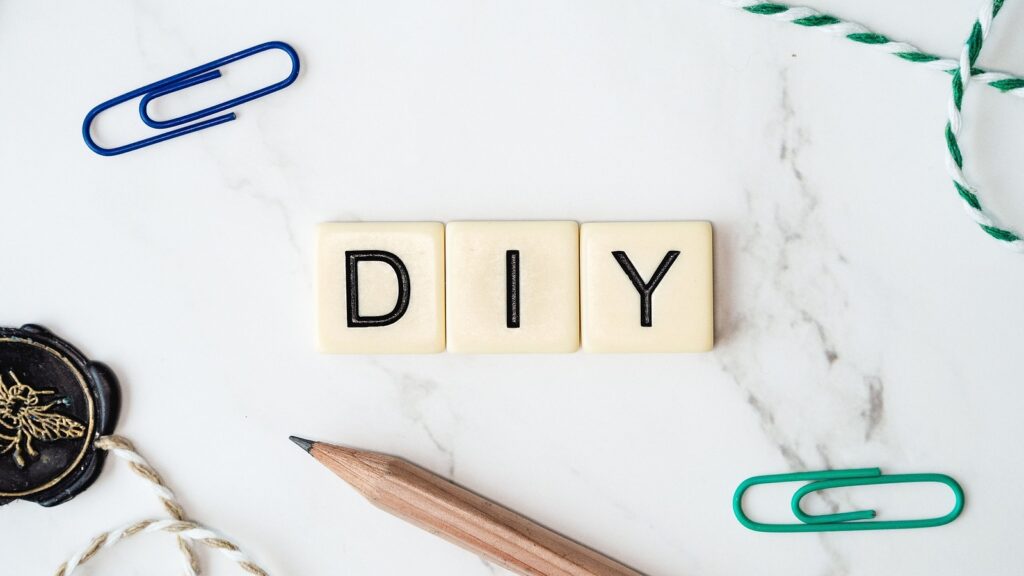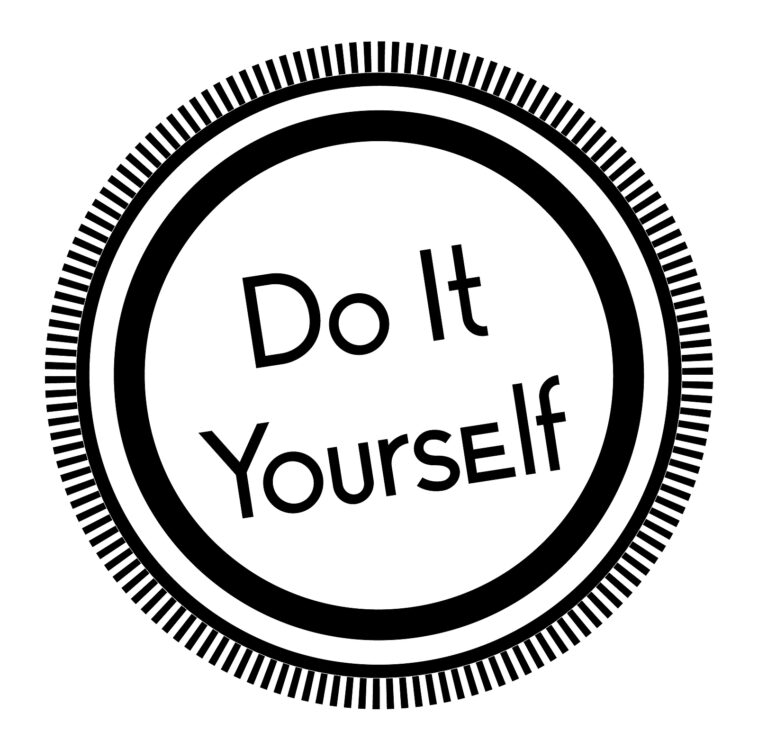What Does DIY Mean in Text: The Acronym Decoded
Ever since I began diving deep into the world of texting and online chats, one acronym has consistently stood out: “DIY.” I remember the first time I came across it and wondered, “What does DIY mean?” Over time, I've learned that it stands for “Do It Yourself.”
It's fascinating how this term, rooted in self-reliance and hands-on projects, has seamlessly woven itself into our digital conversations. Whether I'm scrolling through social media or exchanging texts with friends, DIY pops up as a testament to our ever-evolving digital language.
Understanding the Acronym: What is DIY?
DIY, which stands for “Do It Yourself”, is more than just a simple acronym. Predominantly found in text messages, online forums, blogs, and books, it captures a philosophy of individual empowerment, suggesting self-reliance, self-sufficiency, and the courage to take on tasks without the direct aid of professionals. While many might associate DIY with home renovation or crafting, its reach extends far beyond, encompassing activities like cooking, gardening, personal development, and even technology projects.
Tracing the History: The Origins of DIY
The concept of self-reliance predates the catchy acronym, but “Do It Yourself” as a phrase found its footing in the early 20th century. Its surge in popularity can be traced back to the mid-20th century, coinciding with a larger cultural shift that witnessed a move away from dependency on manufactured goods and services. Instead, there was a newfound appreciation for individual craftsmanship, creativity, and the practical application of skills.
The DIY culture is not just about saving money or bypassing professionals. It became symbolic of self-expression, empowerment, and personal fulfillment. It championed the idea that with the right resources, tutorials, and a bit of determination, anyone could learn a new skill, craft an item, or even renovate spaces. Over the years, this movement has only grown, fueled by communities, both online and offline, sharing knowledge, and resources, and celebrating the spirit of hands-on creativity and resourcefulness.

DIY in the Digital Age
DIY in Modern Communication
As technology and communication methods have evolved, so has the application of DIY. Within the realm of texting and online messaging, DIY has taken on a more dynamic role. When utilized in such contexts, it's not just about crafts or home improvements, but encapsulates a mindset of independence and problem-solving.
For instance, in a digital conversation, if a colleague is grappling with a software glitch, one might cheekily suggest, “Have you tried to DIY it?”, encouraging a self-reliant approach to troubleshooting.
DIY's Flourishing Presence on Social Media
The boom of social media has provided DIY with an expansive platform, magnifying its influence and reach. Platforms like Instagram, Pinterest, and YouTube have become repositories of knowledge, brimming with DIY content. From simple life hacks to intricate crafts, social media is awash with innovative ideas, detailed tutorials, and inspiring success stories.
The prolific use of hashtags such as #DIY, #DIYProjects, and #DIYTutorials ensures that these nuggets of knowledge are easily accessible and shareable, bridging the gap between novice enthusiasts and seasoned DIY experts.
Embracing DIY as a Way of Life
In this digital era, DIY transcends being just an acronym or a passing trend. For a growing number of individuals, it represents a way of life. The act of creating, modifying, or repairing things without the direct aid of experts has a certain allure.
There's an inherent satisfaction in seeing a project through from start to finish, relying solely on one's ingenuity. Furthermore, with the rise of eco-consciousness, many are turning to DIY as a sustainable alternative, upcycling old items and minimizing waste.
This thriving DIY culture is chronicled extensively through blogs, vlogs, and myriad social media posts, not just as a testament to individual accomplishments but also as a beacon, urging more people to experience the joy and fulfillment of a hands-on approach to life.
DIY Across Different Domains
DIY in Home Enhancement and Upgrades
When people hear “DIY”, home improvement often springs to mind first. This realm has witnessed countless homeowners and renters roll up their sleeves to give their spaces a fresh, personalized look.
By engaging in tasks like painting walls in chosen hues, fixing pesky plumbing issues, or assembling that intricate piece of furniture, individuals not only save on costs but also infuse their homes with a personal essence. These projects can be as modest as fixing a squeaky door or as ambitious as overhauling an entire kitchen or bathroom.
Artistry and Creativity: DIY Crafts and Pastimes
The domain of crafts and hobbies is a playground for those with a DIY spirit. Here, creativity knows no bounds. Individuals dive into activities such as knitting cozy scarves, chiseling intricate wooden designs, molding clay into exquisite pottery, or crafting bespoke jewelry.
These DIY endeavors often yield items that are not only unique but also carry the creator's personal touch, making them perfect for gifting or serving as cherished keepsakes. Moreover, immersing oneself in such projects often acts as a therapeutic escape, allowing a break from the daily grind.
The Tech Frontier: DIY in the Digital World
The digital domain is by no means untouched by the DIY wave. Tech aficionados frequently venture into the DIY space, whether it's piecing together their dream computer rig, soldering components onto a circuit board, or troubleshooting software glitches.
There's a certain pride and satisfaction in using a device that one has tweaked or built from the ground up, tailored to individual preferences and needs.
DIY as a Tool for Personal Evolution
Venturing beyond tangible projects, the ethos of DIY finds relevance in the arena of personal growth and self-betterment. Ambitious souls harness DIY strategies to hone their skills, pick up new languages, or delve into disciplines they've always been curious about.
With a plethora of resources at their fingertips, from comprehensive online courses and instructive YouTube channels to insightful self-help books, the journey of self-directed learning and improvement has become more accessible and rewarding. This DIY approach to personal development underscores the belief that one doesn't always need formal instruction or institutions to grow and evolve.
The Appeal of DIY Culture
Empowerment and Unbridled Independence
Central to the allure of DIY culture is the profound sense of empowerment and autonomy it bestows upon its adherents. By plunging into a DIY project, be it crafting a mosaic or troubleshooting a home appliance, individuals navigate a transformative experience.
Not only do they acquire new skills or hone existing ones, but they also reinforce their self-belief, building a reservoir of confidence. This surge in self-assurance permeates other areas of life, fostering an ethos of self-reliance and a can-do attitude.
Economic Advantages and Wise Financial Choices
A tangible benefit of diving into the DIY world is the potential for significant cost savings. Undertaking projects or fixes independently circumvents the often hefty fees associated with professionals or the price tags of brand-name products.
Beyond the immediate monetary relief, there's also an invaluable aspect of financial empowerment, where individuals feel equipped to make informed decisions that are both budget-friendly and quality-oriented. Such economic prudence, prompted by DIY endeavors, can lead to long-term financial well-being.
Unleashing Creativity and Authentic Expression
The realm of DIY stands as a boundless playground for personal expression. It grants individuals the freedom to tailor creations to their exact specifications and tastes.
Whether it's concocting a skincare product with chosen ingredients, designing apparel that mirrors one's style, or crafting home decor that encapsulates personal stories and memories, DIY offers a platform for authentic self-expression. This not only results in unique creations but also fosters a deep sense of connection and pride in one's work.
A Commitment to Greener Choices
In today's context, where sustainability is paramount, DIY culture emerges as a torchbearer of eco-conscious practices. Many DIY aficionados gravitate towards projects that echo sustainable principles. This might involve creatively repurposing old materials, giving them a new lease on life, or making conscientious choices about sourcing eco-friendly raw materials.
Such initiatives not only minimize waste and reduce the carbon footprint but also promote a mindset of resourcefulness and environmental responsibility, positioning DIY as a lifestyle that's in harmony with nature.

DIY Resources and Communities
Informative DIY Blogs and Websites
In the vast digital landscape, there is an abundant array of DIY blogs and websites brimming with invaluable content. These platforms offer meticulous step-by-step guides, innovative project ideas, and endless inspiration to fuel any DIY passion.
They span a diverse range of topics, from fashion makeovers and kitchen hacks to home renovations and garden transformations. Many of these sites also feature user-generated content, expert interviews, and product recommendations, making them comprehensive resources for novices and seasoned DIYers alike.
Interactive DIY YouTube Channels
YouTube stands as a cornerstone for the global DIY community. The platform is teeming with dedicated channels where creators share in-depth tutorials, product demonstrations, and firsthand experiences of their DIY journeys.
The visual nature of these videos offers clarity and makes the learning process more engaging, enabling viewers to grasp techniques and methods with ease. Furthermore, many YouTubers interact with their audience through comments, addressing queries and providing additional tips, thereby fostering a more interactive and community-driven learning experience.
Dynamic DIY Social Media Communities
The rise of social media has given birth to dynamic online communities where DIY enthusiasts from around the world converge. Platforms such as Facebook, Reddit, Pinterest, and Instagram host specialized groups, forums, and boards dedicated to various DIY niches.
Here, members exchange ideas, showcase their latest creations, seek input on challenges, and celebrate each other's successes. These virtual communities act as supportive spaces where both experts and novices can collaborate, learn, and grow, strengthening the global DIY network.
Additionally, many of these platforms feature real-time events, challenges, and collaborations, adding another layer of engagement and camaraderie to the DIY experience.
DIY Safety and Caution
Engaging in DIY projects undoubtedly brings immense satisfaction, savings, and a sense of accomplishment. However, the journey from conception to completion must always be paved with caution and a keen emphasis on safety.
In-depth Research and Knowledge Acquisition
Before diving headfirst into a project, invest time in thorough research. This not only ensures that you're well-equipped with the correct techniques and tools but also alerts you to potential hazards.
Especially when venturing into specialized areas like electrical installations, plumbing, or woodworking, a foundational understanding of the task can be the difference between success and mishap. Many online resources, instructional videos, and community forums offer insights into the do's and don'ts of specific projects.
The Right Tools and Protective Gear
Equipping oneself with the appropriate tools is crucial. They not only make the job more manageable but also significantly safer. In addition, specific projects necessitate the use of protective gear. For instance, when working with chemicals, wearing gloves and safety goggles is paramount.
Similarly, tasks that generate dust or involve loud machinery may require face masks and ear protection. Always ensure that the gear you use is in good condition and fits correctly.
Stay Alert with Chemicals and Machinery
A special note of caution is warranted when DIY projects involve chemicals or heavy machinery. Always read labels and safety instructions, ensuring that you're using chemicals in well-ventilated areas and storing them away from children and pets.
As for machinery, be it a simple power drill or more complex equipment, always read the user manual thoroughly and adhere to safety protocols. If you're unfamiliar with a machine, consider seeking hands-on training or guidance from experienced individuals.
Frequently Asked Questions (FAQs) about DIY
Q: Why do people say DIY?
A: People use “DIY” to refer to the concept of completing tasks, typically related to crafts, home improvement, or other projects, without the direct aid of experts or professionals. By saying “DIY”, they emphasize the personal, hands-on aspect of the activity.
Q: What is DIY short for?
A: DIY stands for “Do It Yourself.”
Q: What is DIY in social media?
A: In the context of social media, DIY usually refers to content or posts that showcase or instruct viewers on how to undertake certain projects or activities on their own. This could range from creating crafts, making home decor, cooking recipes, beauty hacks, and more. DIY content is often shared in the form of videos, blog posts, or photo tutorials, enabling viewers to replicate the results.
Q: What does DIY mean on Tik Tok?
A: On TikTok, DIY refers to videos that demonstrate how to make or achieve something by oneself, without the need for professional help. These can be short tutorials, hacks, crafts, or any project that can be done at home. Given TikTok's short video format, DIY content is usually quick, engaging, and often offers innovative and creative solutions to everyday problems or needs.
Q: Is DIY more cost-effective than hiring professionals?
A: DIY can often be more cost-effective since you're not paying for labor. However, it's essential to factor in the costs of materials, tools, and potential mistakes. In some cases, especially where specialized knowledge or equipment is needed, hiring professionals might be more economical in the long run.
Q: How can I start with DIY projects?
A: Begin with a small, manageable project that interests you. Gather the necessary materials, tools, and follow online tutorials or guides. As you gain confidence, you can tackle more complex projects.
Q: Are there specific tools I should have for DIY?
A: While the tools depend on the project, some basic tools like a hammer, screwdriver set, measuring tape, pliers, and a utility knife are useful for many DIY tasks.
Q: Is DIY only about crafts and home improvement?
A: No, DIY encompasses a wide range of activities. It can include cooking, gardening, sewing, car repairs, and even tech projects like building a computer.
Q: Can DIY be dangerous? A: Some DIY tasks, especially those involving electricity, heavy machinery, or toxic materials, can be risky. Always prioritize safety, use the right protective equipment, and if in doubt, seek expert advice.
Q: Are there online communities for DIY enthusiasts?
A: Yes, there are numerous online forums, social media groups, and websites dedicated to DIY topics where enthusiasts share projects, advice, and tutorials.
Q: How has technology influenced the DIY movement?
A: Technology, especially the internet, has democratized information. Platforms like YouTube, Pinterest, and TikTok have made it easier for people to share and access DIY tutorials, leading to a surge in stand for diy meaning modern ideas designs culture.
Q: What's the environmental impact of DIY?
A: DIY can be environmentally friendly, especially when it involves upcycling or repurposing materials. However, it's essential to be conscious of waste and choose sustainable materials and practices whenever possible.
Q: Can kids get involved in DIY?
A: Absolutely! DIY can be a great way for children to learn new skills and express creativity. Ensure the projects are age-appropriate and provide supervision as needed.
Q: How do I know if a DIY project is beyond my skill level?
A: It's essential to assess the complexity, tools required, and potential risks of a project. If any part feels overwhelming, or if it's a task with significant consequences for errors (like electrical work), it might be best to consult or hire a professional.
Conclusion
As I reflect on the sprawling landscape of DIY, it feels like a journey I've taken, alongside countless others, into the heart of creativity and self-reliance. From those early days of puzzling over the acronym in text messages to immersing myself in the vast DIY online communities, it's been a voyage of discovery, empowerment, and personal growth.
Each DIY endeavor, be it a minor repair at home or a digital deep dive, has been a testament to the human spirit's inherent desire to create, solve, and evolve. Beyond the tangible projects and skills acquired, it's the intangible rewards that resonate deeply – the pride in one's work, the exhilaration of overcoming challenges, and the bonds forged within the does diy stand community.
In this digital age, DIY is more than just a culture or trend; it's a reflection of our collective spirit, a testament to our resilience and creativity. As I continue my own DIY journey, I am reminded of the beauty of learning, sharing, and above all, the joy of doing it myself.
Sources
https://www.housebeautiful.com/lifestyle/a22567439/what-is-diy-meaning/




